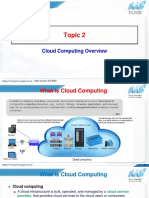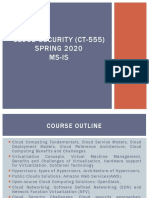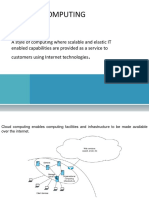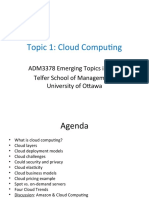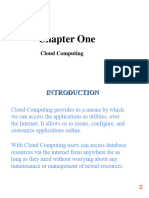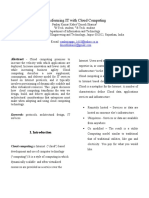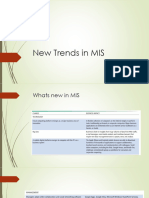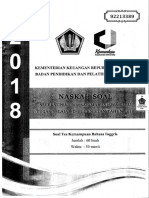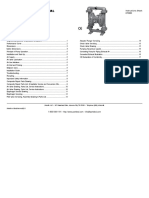0% found this document useful (0 votes)
39 views67 pagesModule 1-1
The AWS Cloud Practitioner course aims to provide an understanding of cloud computing concepts, effective networking solutions, security measures, storage management, and pricing models on the AWS platform. It covers the history, essential characteristics, advantages, disadvantages, and various cloud service models (IaaS, PaaS, SaaS) along with deployment models (public, private, hybrid, community). The course emphasizes the importance of cloud computing in modern IT infrastructure and its impact on resource management and budgeting.
Uploaded by
Vandana AwasthiCopyright
© © All Rights Reserved
We take content rights seriously. If you suspect this is your content, claim it here.
Available Formats
Download as PDF, TXT or read online on Scribd
0% found this document useful (0 votes)
39 views67 pagesModule 1-1
The AWS Cloud Practitioner course aims to provide an understanding of cloud computing concepts, effective networking solutions, security measures, storage management, and pricing models on the AWS platform. It covers the history, essential characteristics, advantages, disadvantages, and various cloud service models (IaaS, PaaS, SaaS) along with deployment models (public, private, hybrid, community). The course emphasizes the importance of cloud computing in modern IT infrastructure and its impact on resource management and budgeting.
Uploaded by
Vandana AwasthiCopyright
© © All Rights Reserved
We take content rights seriously. If you suspect this is your content, claim it here.
Available Formats
Download as PDF, TXT or read online on Scribd
/ 67






